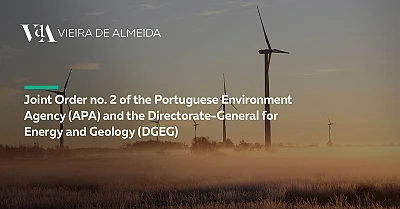Within the context of the energy transition and Portugal’s commitment to renewable energy sources, the Directorate-General for Energy and Geology (DGEG) and the Portuguese Environment Agency (APA) issued Joint Order no. 2, of 31 July 2025 (“Joint Order no. 2”), which clarifies the legal framework governing the licensing and environmental assessment of electricity-storage facilities in accordance with Decree-Law no. 15/2022 of 14 January and Decree-Law no. 151-B/2013 of 31 October, as currently in force (“RJAIA”).
Within this context, Joint Order no. 2 provides for the following clarifications:
- Co-located Storage (Armazenamento Colocalizado)
Alterations or extensions to a renewable energy power plant that include a storage facility are exempt from an Environmental Impact Assessment (“EIA”) or from a case-by-case analysis, provided that the storage installation is situated entirely within the area of the project that was originally subject to the environmental decision (either a Declaration of Environmental Impact – “DIA” – or a Decision of Environmental Compliance of the Execution Project – “DCAPE”).
The applicant shall scrupulously observe all conditions imposed in the original DIA or DCAPE and shall submit all documentation relating to the storage facility in the post-assessment phase (pós-avaliação).
Furthermore, a five-meter buffer zone shall be maintained between the storage facility and the fenced boundary of the project area.
2. Standalone Storage (Armazenamento Autónomo)
Standalone storage projects are exempt from an EIA or case-by-case analysis, provided that the same do not exceed the thresholds set out in Annex II to the RJAIA, namely:
- General Cases: 50 MW/200 MWh; and
- Sensitive Areas: 20 MW/80 MWh.
The applicant shall also maintain a five-meter buffer zone between the storage facility and the fenced boundary of the project area.
The order entered into force on the day following its publication on the websites of the DGEG and the APA.
